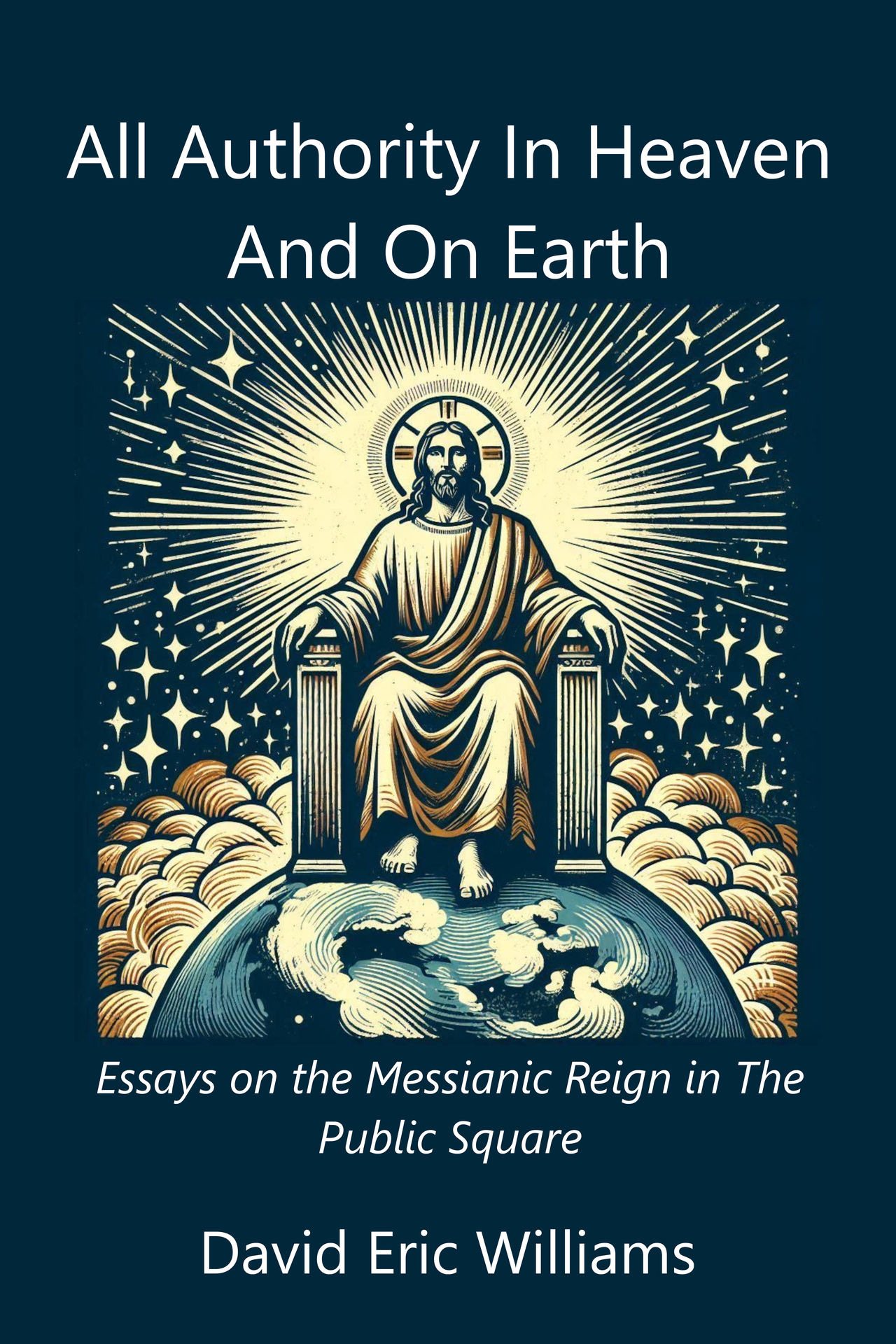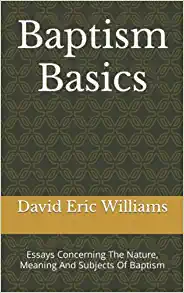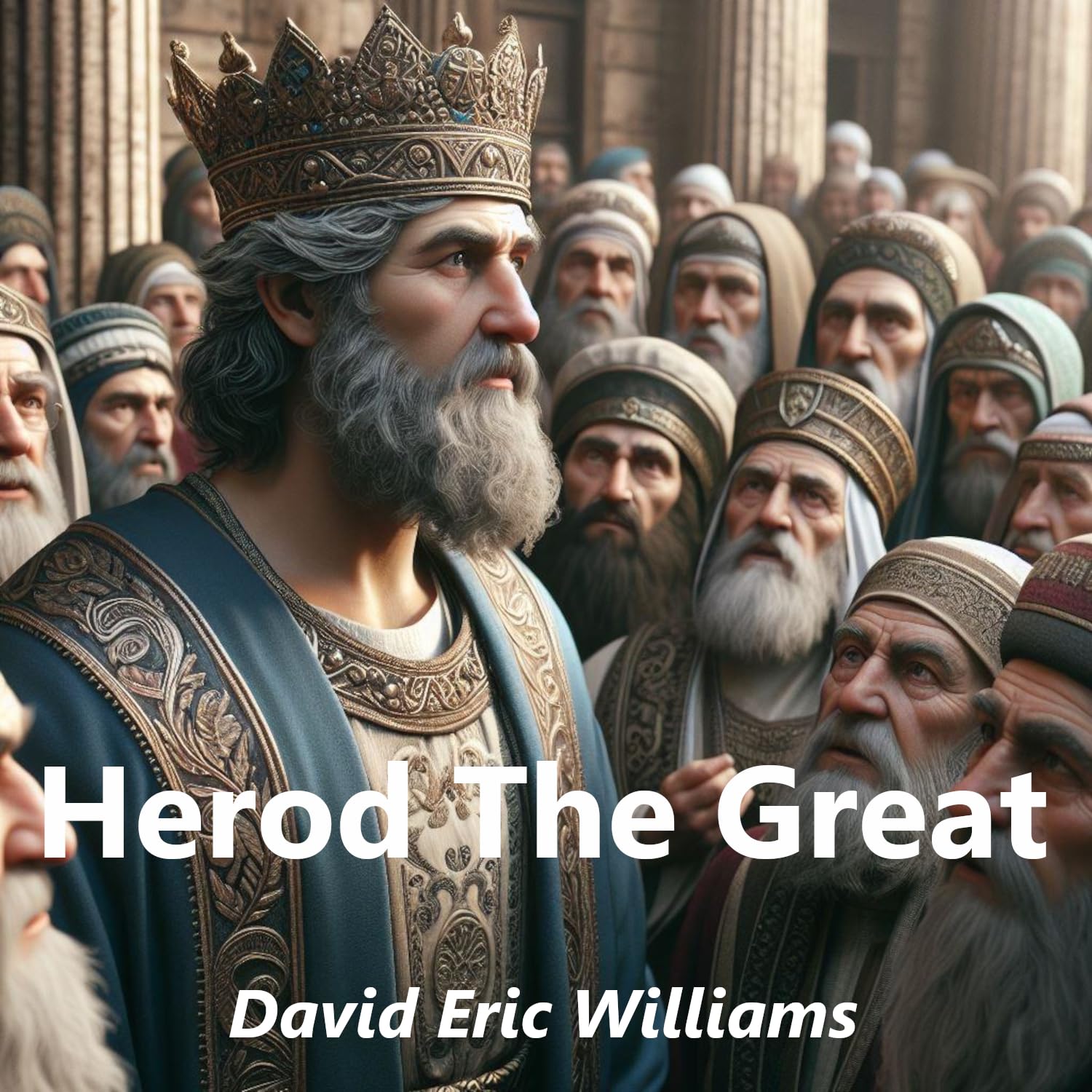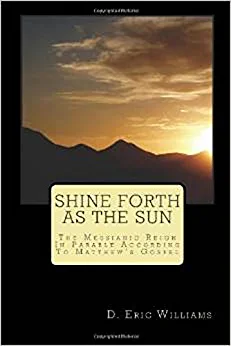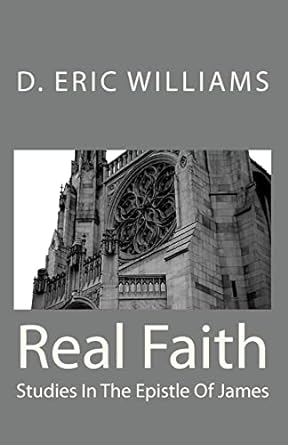Covenant Sequence And The Prologue To John's Gospel
© 06.29.19 By David Eric Williams
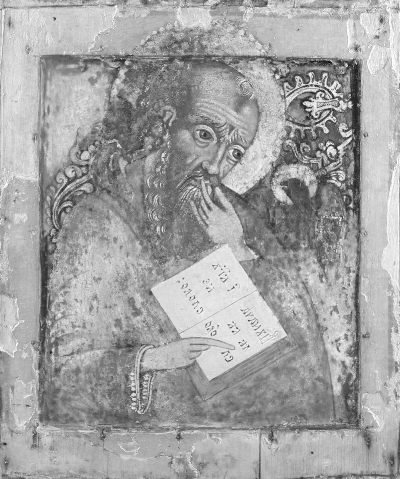 It is commonly understood that John's Gospel draws heavily upon the Old Testament1for the illustration and explanation of Jesus' life and ministry.2 This is no less true in the prologue to the main body of the Gospel. For, not only does John draw upon the Old Testament to explain the nature of Jesus and his work, he also presents his introductory remarks in a recognized covenant form. As we will see, John insists that Jesus is the true sovereign with established representation, demanding behavioral compliance, extending rewards to those who submit and promising eternal continuity to his followers. This to say, John's prologue is outlined by regency, representation, requirement, reward and realization.
It is commonly understood that John's Gospel draws heavily upon the Old Testament1for the illustration and explanation of Jesus' life and ministry.2 This is no less true in the prologue to the main body of the Gospel. For, not only does John draw upon the Old Testament to explain the nature of Jesus and his work, he also presents his introductory remarks in a recognized covenant form. As we will see, John insists that Jesus is the true sovereign with established representation, demanding behavioral compliance, extending rewards to those who submit and promising eternal continuity to his followers. This to say, John's prologue is outlined by regency, representation, requirement, reward and realization.
Historical-Cultural Context
Johannine authorship of the fourth Gospel may reasonably be established based upon both internal and external evidence. One aspect of the internal evidence considers the names of the twelve disciples mentioned in the fourth Gospel and by a process of elimination leads us to John, son of Zebedee. 3 Also, the Gospel itself reveals that the author was well acquainted with Palestine, wrote in the style of a Jew, wrote as an eye witness and was very familiar with the "apostolic band."4
External evidence supporting Johannine authorship comes primarily from the witness of the early church fathers. Among these are, Irenaeus, 5 Clement of Alexandria,6 Tertullian,7 Papias,8 Origen,9 Theophilus "and other second-century writers."10 When the internal and external evidences are considered "the best solution ...is that John the apostle is the author of the fourth Gospel."11
Ephesus is accepted as the site of authorship for the fourth Gospel by most scholars. This was the view of the early church fathers and no compelling evidence has been produced to deny this assertion.12
While most scholars date the writing of John's Gospel to the "mid-nineties"13 there is reasonable evidence it was penned before A. D. 70 and the fall of Jerusalem. For instance,
J. A. T. Robinson points out that with the possible exceptions of Hebrews and Revelation 'the Gospel of John is that in which we might most expect an allusion (however indirect, subtle or symbolic) to the doom of Jerusalem, if it had in fact already been accomplished. For the focus of the Gospel is on the rejection by Metropolitan Judaism of the one who comes to his own people as the Christ and King and Shepherd of Israel.14
Also, if John wrote his Gospel after the fall of Jerusalem, it is curious he does not mention the event in relation to the prophecy of Caiaphas (John 11:49-50).15 At any rate, there is no compelling reason to insist on a late date for the fourth Gospel.
It is often thought John wrote his Gospel "in order to reach Diaspora Jews and Gentiles attracted to Judaism."16 Another school of thought suggests John "addresses a community of predominantly Jewish Christians rejected by most of their non-Christian Jewish communities because of their faith in Jesus."17 The Gospel of John itself gives us a hint as to who the intended audience might be: "But these are written so that you may continue to believe that Jesus is the Messiah, the Son of God, and that by believing in him you will have life by the power of his name" (John 20:31, see also 19:35). Even here, textual variations make it difficult to know whether John intended his Gospel to initiate belief or maintain it.18 Taking the Gospel as a whole, it is safe to say both ideas were in view. Thus John's audience was both the church (specifically, "living in Ephesus and surroundings"19) and unsaved Jews and God fearing Gentiles.20
Literary Context
The Gospel of John, like the Synoptics, is best understood as historical biography.21 Perhaps more accurately, John's account may be described as theological, historical biography.22 In other words, John is concerned with historical accuracy and with conveying the theology of that history.
The first eighteen verses of John's Gospel presents ideas that will unfold throughout the entire account. For instance, "John is concerned to emphasize the genuine humanity of Jesus and at the same time to bring out the fact that Jesus really came from God."23 The prologue also introduces the theme of light versus darkness which is a major emphasis in the body of John's Gospel. John's use of the Old Testament in the prologue is mirrored in the rest of the Gospel. "One of the features of these allusions [to the Old Testament] is the manner in which Jesus is assumed to replace Old Testament figures and institutions."24 This begins in the prologue with John's "redefinition" of the logos as "rooted not in Greek but in Semitic thought."25
Covenant Context
In 1962, The Wycliffe Bible Commentary appeared with comments on the book of Deuteronomy written by Meredith Kline.26 It seems Kline's entry was the first printed presentation of his groundbreaking studies concerning the structure of Yahweh's covenant(s) with his people.27
According to Kline, the "Sinaitic and other divine covenants of Scripture" mirror the outline of the ancient near eastern Suzerain treaties.28 Kline proposed that, like the Suzerain treaties, the biblical covenant(s) include five elements: a preamble, an historical prologue, stipulations, sanctions and succession, or covenant continuity.29 As important as Kline's thesis was, it was open to improvement.
More than twenty years after Kline's work first appeared, Ray Sutton published That You May Prosper, building upon and refining Kline's work.30 Possibly the most helpful aspect of Sutton's work was the reworking and rewording of the five point structure. For Sutton, the five points of the covenant model are: transcendence, hierarchy, ethics, sanctions and continuity.31 The essence of these five points can be captured using a variety of terms. For instance, in this study of the prologue to John's Gospel, the five points are subsumed under the terms, regency, representation, requirement, reward and realization. As we will see, the names are changed but the principles and presence of the covenant structure remain.
Contents
Having considered the context for the prologue to John's Gospel, this paper will now examine the contents of the passage. In keeping with the hypothesis that John 1:1-18 follows the covenant sequence, John's prologue will be shown to naturally fall into a five point outline.
The Word Who is God: Regency (1-5)
John begins his Gospel with a clear reference to the original creation account,32 tying into the Old Testament record with verse one of his prologue. Moreover, he "leaves no doubt from the inception of his Gospel that he is recording a new creation in Christ Jesus."33 John's reference to creation is significant on two fronts; it concerns the deity of Jesus the Christ and the connection between creation and covenant. "In other words, John inaugurates his Gospel with a carefully constructed declaration of a new creation via the Logos."34
By saying "in the beginning the Word already existed" (John 1:1a),35 John insists the Word is uncreated and existed before the creation of the world.36 Moreover, John makes the startling claim that "the Word was with God, and the Word was God" (John 1:1b). In so writing, John "reveals the Word of God not merely as an attribute of God, but as a distinct person within the Godhead, dwelling with the Creator before creation began."37
While there has been much discussion concerning the source for John's use of the Greek term logos it should be clear from the context of John's Gospel as a whole that the apostle draws his meaning of logos from the Old Testament. There is no reason to suggest John relies upon a Hellenistic understanding of logos or the "speculative philosopher" Philo38 in defining logos. Although Philo uses logos as many as 1300 times in his works, "the meaning is never very definite." 39 Clearly John did not look to a worldview in agreement withPhilo for direction.
Instead, John makes use of the already existing body of thought concerning the "Word" in Hebrew literature. John is familiar with the Hebrew term dabar typically translated as "word"40 in the Old Testament. Hebrew Scripture presents the Word of God as connected to "God's powerful activity in creation (cf. Gen 1:3ff; Ps. 33:6), revelation (Je. 1:4; Is. 9:8; Ezk. 33:7; Am. 3:1, 8) and deliverance (Ps. 107:20; Is. 55:1)."41 In keeping with John's strong use of the Old Testament, "the ultimate fountain for this choice of language cannot be in serious doubt."42
John starts his Gospel with the same words as Genesis to "echo the creation narrative in the opening phrase of the Hebrew canon of Scripture" connecting the logos with God from a time before time began.43 Thus it is clear the Word is uncreated. As one who existed from the beginning with God, and as God, the Word is true deity. This is an unequivocal assertion on the part of the apostle John.
In the third verse of the prologue, John goes so far as to attribute the very act of creation to the Word. "John's language here is careful and specific: the Logos is not one preeminent creation that went on to create others. In fact the Logos was never created. Nothing came into being without him."44 This echoes Paul's assertion in his letter to the church in Colosse when he says,
Christ is the visible image of the invisible God. He existed before anything was created and is supreme over all creation, for through him God created everything in the heavenly realms and on earth. He made the things we can see and the things we can't see, such as thrones, kingdoms, rulers, and authorities in the unseen world. Everything was created through him and for him. He existed before anything else, and he holds all creation together. (Colossians 1:15-17)
The Word is the active agent in the initial production and consequent preservation of creation. Truly, according to John (and the apostle Paul), there is no existence apart from the Word.
Not only is there no initial existence apart from the Word, there is no rational awareness or meaningful life. According to verse four, "the source of man's intellectual and spiritual perception, his conscience as well as his consciousness, is the divine Word."45 More importantly is the idea that the light and life provided by the Word is the spiritual understanding people receive "in active faith" unto salvation resulting in life eternal.46
John will develop the contrast between light and dark throughout his Gospel. Here in verse five he assures his readers that darkness can never extinguish the light. In other words, John affirms that the wickedness of the world organizing itself apart from God can never overcome the person and work of the Word.47
The first section of the prologue presents the Word as sovereign God. The fact of Jesus' sovereignty (regency) is developed throughout the remainder of John's Gospel. In John 5:17-18 for example, Jesus says "My Father is always working, and so am I" which caused his enemies to try "harder to find a way to kill him. For he not only broke the Sabbath, he called God his Father, thereby making himself equal with God." Again, in John 10:30 Jesus openly says, "The Father and I are one."
Proclaimed by John: Representation (6-9)
Some have thought this section concerning John the Baptist is a curious insertion.48 However, if we understand John's prologue as presented in the covenant sequence, it is clear the apostle John has transitioned to the second point of the covenant and portrays the Baptizer as the representative of God and the Word. This is his duty: representation. He was given the responsibility to tell others about the light in order to generate belief on the part of his hearers.
Lest the readers of this Gospel are confused, John, the author, makes it clear that John the Baptist was not the light but a herald sent by God as a "kingdom crier." While it may be true John wrote this passage in order to oppose those who "contended that John the Baptist was himself a final revelation of God to mankind,"49 it seems more likely the apostle is simply reemphasizing the Baptizer's role as a representative.
The nature of John's representation is important. According to Isaiah, the proclamation of John was earth shattering:
Listen! It's the voice of someone shouting, "Clear the way through the wilderness for the LORD! Make a straight highway through the wasteland for our God! Fill in the valleys, and level the mountains and hills. Straighten the curves, and smooth out the rough places. Then the glory of the LORD will be revealed, and all people will see it together. The LORD has spoken!" (Isaiah 40:3-5).
This is the language of "de-creation," cosmic phenomena metaphor that signals the coming of a new creation, a new covenant. The Baptizer's mission was to come violently upon and remove the obstacles "that have kept God from his people."50
In verse nine the apostle repeats the idea of light provided by the Word. He has no new information here but again emphasizes the Baptizer's position in God's hierarchy of order; John the Baptist was the forerunner, the representative of the Word.
The concept of representation is developed in the body of John's Gospel as well. The Baptizer is shown to be representing, and then handing over, representation to Jesus, saying, "he must become greater and greater, and I must become less and less" (John 3:30). The apostle includes this information because it supports the new covenant emphasis of his Gospel. Moreover, Jesus is portrayed as the new Moses and the new Adam (the son of God, the Son of Man, cf. Luke 3:38, 1 Corinthians 15:45-47). He is the true representative of the Father doing what he sees the father doing (John 5:19, 14:31) and proclaiming that he is the only way to the Father (John 14:6, cf. 1 Timothy 2:5).
Requires Us to Receive Him: Requirements (10-13)
Verse 10 presents a dilemma. Although everything was made by the Word who was with God and who is in fact God, his deity and sovereignty was not recognized by the very world he created. This event illustrates the destitute condition of the world's inhabitants. They are spiritually blind, without light.
Even more amazing, his own people rejected him. Here is a nod to the true humanity of the Word. Although John has yet to describe the incarnation, he alludes to this in verse 11 when he says that the Word came to his own people. He came not as an alien or "the other" but as "one of the family."
We must remember that this prologue is followed by a detailed Gospel. We draw from what John writes hereafter to better understand verse twelve when he says "all who believed him and accepted him, he gave the right to become children of God" (1:12). John will later develop the idea that even the Jewish people are required to believe and accept the Word - Jesus the Christ. And this is a requirement. It is not an option. Those who wish to be in a right relationship with the Father must receive the Word. Yet rather than a regression, this is a liberalization of the covenant relationship. Indeed, with the coming of the Word into the world "you don't have to be born into a particular family or part of the world. God wants people from everywhere to be born in a new way, born into the family which he began through Jesus and which has since spread through the world. Anyone can become a 'child of God'."51
Those who do receive him are reborn. They are made new creation. Here again we see covenant like language; creation and covenant always go hand-in-hand.
These new creations are representative of a new humanity tracing their lineage from the eschaton Adam rather than the first Adam (cf. 1 Corinthians 15:45). According to verse thirteen, it is not a (new) birth of physical means, human passion or human decision but is a birth that comes from God.
The requirement of new birth is the primary condition placed upon humanity. This is emphasized and enlarged in the ethical demands of the new covenant scattered throughout John's Gospel. Thus, "Anyone who doesn't obey the Son will never experience eternal life but remains under God's angry judgment" (John 3:36b); "If you love me, obey my commandments" (John 14:15, cf. verses 16-21); "When you obey my commandments, you remain in my love, just as I obey my Father's commandments and remain in his love" (John 15:10, cf. verses 11-14).
To Realize His Blessings: Reward (14-16)
In this section John touches on the rewards of believing and accepting the Word. But first John will flesh out an idea he presented in verse ten. For here he says the one who is "nothing less than God"52 became flesh. In other words, "the second Person of the Trinity assumes the human nature, without laying aside the divine. John everywhere insists - over against heretics - that the divine and the human nature of Christ became fully united without being fused.53 Therefore, the word dwelt among human beings. He dwelt in his own creation, making his home among those he created and sustains.
The term referencing the abiding of the word among human beings is a form of the Greek word skenoo. The term skenoo can refer to "a tent, a tabernacle, any temporary dwelling"54 and is often translated as "tabernacled." That is to say, "the word tabernacled among us." Much has been made of this concerning the temporary nature of Jesus' earthly ministry. However, it is more likely "John wants us to recall God's presence in the tabernacle in the wilderness" and the idea of "Yahweh's tabernacle in the midst of his people and of the Shekinah which he causes to dwell among them."55
Verse 14 further elaborates upon the nature of the Word that became human. He is called "the Father's one and only Son." The Greek is monogenes and carries the meaning of "only begotten" or "only born."56 Yet there is more here than simply a designation as the only son of God. Monogenes is also a "predicate of majesty. ...Jesus is in the closest intimacy with God. There is no other with whom God can have similar fellowship. He shares everything with his Son."57 Truly "the glory displayed in the incarnate Word is the kind of glory a father grants to his one and only, best-loved son – and this Father is God himself. Thus it is nothing less than God's glory that John and his friends witnessed in the Word made flesh."58
Verse fifteen presents us with yet another reference to John the Baptist. Once again we are told John bore witness as a representative of the Word. John the apostle states that the Baptizer provided a chronological explanation of his ministry as contrasted with the Word. The Baptizer explained that the incarnate Word had a higher rank because "he existed long before me" (15b). Again, the deity and humanity of the incarnate Word are affirmed.
Finally, the blessings received from the abundance of the Word follow one upon another (verse 16). The grace of God is "continuous and is never exhausted."59
The truth that there are covenant blessings available to the followers of Jesus is also found in the remainder of John's account. In John 3:16, 36, 5:24, 10:10, 28, 13:17 and 20:29, believers are promised life and life abundantly. To believe and accept Jesus is to obey his commands and that results in blessings.
For He Is the Originator of the New Creation Covenant: Realization (17-18)
Truly, the grace of God has been evident from the very beginning of creation. Nonetheless, with the coming of the incarnate Word, God's grace is amplified and "replaced by a further gracious gift, the grace and truth embodied in Jesus Christ."60 Part of the significance of "God's unfailing love and faithfulness" coming through Jesus Christ is the fact that Jesus is with his people always (Matthew 28:20). After Jesus' departure, this was fulfilled in the presence of the Holy Spirit, "another Advocate, who will never leave you" (John 14:16). Hence, there is a guarantee that the new creation life in the incarnate Word has a future.
In Jesus Christ (named for the first time in verse 17) God's grace and truth are fully realized. This is so because it is the incarnate Word, Jesus, who has seen God. He has an intimacy with God unlike anyone else. John will unfold this throughout his Gospel but here he hints that the revelation of God in the incarnate Word is the fulfillment of all of God's promises to his people (cf. 2 Corinthians 1:20). To see God is to have intimacy with him. The one with that relationship is the only one who can mediate peace between God and others. Moreover, to see Jesus is to see God (John 14:9-11) and so followers of Jesus share in his intimacy with the Father.
The final point in the covenant model has to do with continuity (realization). This aspect of the new creation covenant is developed in John's Gospel under the rubric of eternal life and the "forever presence" of the Holy Spirit (John 3:15-16, 4:14, 6:47-54, 14:15-16).
Application
Having discussed the meaning of John's prologue, it is important to apply the principles found therein. In the following paragraphs, this paper will seek practical application of the five sections of the prologue to John's Gospel.
There Is One God: Regency
John's Gospel prologue tells us without equivocation that Jesus the Christ must be recognized as Deity. He is not merely a good man but is the Creator and Lord of all. And as John shows throughout the rest of his Gospel, Jesus Christ is the victor over all.
Not only is Jesus truly God, he is the source of all life. He is the source of natural creation for it is in him we live and move and have our being. Moreover, he is the source of all spiritual life. In chapter fourteen of the Gospel, Jesus makes the absolute claim that, "I am the way, the truth, and the life. No one can come to the Father except through me" (John 14:6). This is an authoritative statement that allows for no argument. It is the statement of one who holds the keys of the kingdom. In short, there is no part of life that is not under the authority of Jesus Christ and no means of salvation apart from submission to Jesus.
Christians are Called to Proclaim the Incarnate Word: Representation
In the second point of the covenant sequence we encounter the idea of representation. A fundamental truth of the Christian faith is that Jesus Christ acts as our representative before the Father (1 Timothy 2:5). The Scripture tells us we are in him, not simply associated with him (John 14:20, 15:4, Romans 8:1, Philippians 3:9). Truly we participate in his death and resurrection and thereby are made a new creation (Romans 6:6, Galatians 2:20). Jesus, the eschaton Adam, is the representative of a new race. All who are in Jesus Christ are part of the new creation humanity.
At the same time, we represent Jesus Christ to the world. Just as John the Baptist came to proclaim the lamb of God, we are to represent Jesus to our modern world (Matthew 28:18-20).
As legitimate representatives of the reigning King of the universe we must refuse any compromise with the world. A properly proclaimed Gospel is politically incorrect due to it exclusivity (John 14:6). Nevertheless, anything other than the truth is to deny Christ and to show a lack of love to the world.
Therefore, tolerance (plurality) concerning religion is a sin (in the sense of "practical agnosticism"). This has ramifications both inside and outside of the Church. We must affirm that Jesus is the way, truth and life to the world. Within the church, we must affirm that fellowship with the Father is circumscribed by the written revelation given us. In other words, we must not seek an avenue to the Father apart from Jesus the Christ.
That Others Will Believe and Accept Him: Requirement
The prologue of John's Gospel made it clear that natural man naturally rejects the incarnate Word. Rebellion of sinful humanity runs so deep they refuse to recognize Jesus for who and what he is. This is so even though the gospel is the true message leading unto salvation.
Yet, God will draw unto himself whomever he desires (John 1:12-13, 6:44). All who believe and accept Jesus Christ are given the privilege of joining the family of God. Truly this is a work of God; he brings the new birth. It is not the result of good works. It is not something any human being can bring about but it is wholly the prerogative of God. It is a requirement placed upon humans that is accomplished by the work of God.
In short, it is required for people to believe in the Lord Jesus Christ in order to be saved. Obedience is not an option. To love the Lord, to be in fellowship with him is to obey him. John is in agreement with Paul: "For we are God's masterpiece. He has created us anew in Christ Jesus, so we can do the good things he planned for us long ago" (Ephesians 2:10). In other words, salvation is by grace, a work accomplished by God. At the same time salvation is expressed by obedience to Christ. Again, "If you love me, obey my commandments" (John 14:15).
And Have Life More Abundantly: Reward
The writer of the book of Hebrews tells us "for the priesthood being changed, of necessity there is also a change of the law" (Hebrews 7:12, New King James Version). Truly, "the law was given through Moses, but God's unfailing love and faithfulness came through Jesus Christ" (John 1:17).
Under the sovereign headship of the incarnate Word, the old has passed away. Those who are in Jesus are no longer under the law. Instead, grace and truth are fully realized in Jesus Christ by those who have submitted to him.
With the coming of the Incarnate Word, people are offered "a rich and satisfying life" (John 10:10b). The law has found its completion in Jesus and his followers are no longer beholden to the Mosaic ritual.
Thus the rich and satisfying life for those who believe and accept Jesus is first and foremost characterized by grace, with the law written upon the heart to guide rather than compel externally (Jeremiah 31:31-34, Hebrews 8:6-13). In this age of the Son of Man, God is with us as we live in covenant relationship in Christ. This is the fulfillment of God's covenant intentions.
God's grace is fully shown and his truth is completely revealed in the person of Jesus Christ. Moreover, the glory of God is revealed in the salvation of sinful persons. In Christ there is meaning, purpose and hope in this life. There are blessings for obedience (John 13:17, 15:14). Truly, life - eternal life - in relationship with the incarnate Word is its own reward. Indeed, we should expect to experience the blessing of the Lord as we live in fellowship with him.
As Participants in the New Creation Covenant: Realization
In the new covenant era, God is seen in Christ and Christ in his people. This is true throughout this age here on earth and in eternity (Matthew 28:20, John 14:18-23). By the presence of the Holy Spirit, Jesus Christ is with his people forever (John 14:16). This is the realization of the covenant promise, "God with us" (Isaiah 7:14, Matthew 1:23). It is a promise true immediately and with ramifications unfolding throughout this current age (Isaiah 11:9, 2 Corinthians 3:18). Thus, we must have confidence that God's plan is successfully unfolding in history. In this life and the life to come, the ever present Christ is ever victorious.
Conclusion
The apostle John emphasized the message of the new covenant by beginning his Gospel with a prologue written according to the covenant sequence. With a careful choice of words and tightly written prose, John declares that the eternal Word is a person, and a member of the Godhead. As the sovereign, the Word is represented by a chosen vessel and the message proclaimed requires one to receive the Word. Belief in and submission to the Word results in blessings, beginning with a relationship with the incarnate Word himself. This relationship is realized in the outworking of the new creation covenant and eternal relational intimacy with God.
___________________________________
1. The Jewish Scriptures were not known as the Old Testament to John and his contemporaries. However, for the sake of clarity and convenience, the Jewish Scriptures will be referred to as the Old Testament throughout this paper.
2. Donald Arthur Carson, The Gospel According to John, ed. D. A. Carson, The Pillar New Testament Commentary (Grand Rapids: William B. Eerdmans Publishing Company, 1991), 98.
3. Leon Morris, The Gospel According To John, Revised, The New International Commentary on the New Testament, ed., Gordon D. Fee, (Grand Rapids: William B. Eerdmans Publishing Company, 1995), 6-8.
4. Morris, 8-12.
5. Irenaeus, "Against Heresies," Ante Nicene Fathers: The Writings Of The Church Fathers Down To A.D. 325, 10 vols., eds., Alexander Roberts, James Donaldson, and A. Cleveland Coxe, (Peabody: Hendrickson, 1999), 1.328.
6. Clement of Alexandria, "Fragments Of Clemens Alexandrinus," Ante Nicene Fathers, 2.580.
7. Tertullian, "Against Marcion," Ante Nicene Fathers, 3.347.
8. D. A. Carson and Douglas Moo, An Introduction To The New Testament, Second Edition, (Grand Rapids: Zondervan, 2005), 229.
9. Origen, "Origen De Principus," Ante Nicene Fathers, 4.242.
10. Carson, Gospel According to John, 70.
11. Thomas D. Lea and David Alan Black, The New Testament: Its Background and Message, Second Edition, (Nashville: B & H Academic, 2003), 158.
12. Lea and Black, 158.
13. Craig S. Keener, The Gospel of John: A Commentary, vol. 1, 2 vols. (Grand Rapids: Baker Academic, 2003), 140.
14. Morris, 26.
15. Morris, 26.
16. Andreas J. Kostenberger, Encountering John: The Gospel in Historical, Literary, and Theological Perspective, Second Edition, (Grand Rapids: Baker Academic, 2013), 8.
17. Keener, 364.
18. New English Translation Notes, The NET Bible, 1996 By Biblical Studies Press, L.L.C. as found in Rick Meyers, (2003-2017), e-Sword (version 11.1.0) [software], retrieved from https://www.e-sword.net/.
19. William Hendriksen, New Testament Commentary: The Gospel of John, (Grand Rapids: Baker Book House, 1953), 35.
20. The possibility of a combined purpose is discussed in, Carson, Gospel According to John, 89.
21. Keener, 33.
22. Morris 35.
23. Morris, 31.
24. Carson, Gospel According to John, 98, brackets added.
25. Hendriksen, 70.
26. Meredith Kline, "Deuteronomy," The Wycliffe Bible Commentary, ed., Charles F. Pfeiffer and Everett Harrison, (Nashville: The Southwestern Company, 1962), 155-204.
27. Kline's book, Treaty of the Great King: The Covenant Structure of Deuteronomy: Studies and Commentary, appeared in 1963.
28. Meredith G. Kline, The Structure of Biblical Authority, Second Edition, (Eugene: Wipf & Stock Publishers, 1989), 27.
29. Kline, "Deuteronomy," 155-197.
30. Ray R. Sutton, That You May Prosper: Dominion By Covenant, (Tyler TX: Institute for Christian Economics, 1987).
31. Sutton, 119-123.
32. Morris, 64.
33. James T. Dennison, Jr., "The Prologue of John's Gospel John 1:1-18," Kerux: The Journal of Northwest Theological Seminary, 8, no. 2 (September 1993).
34. Dennison.
35. All Scripture references are taken from the New Living Translation unless otherwise noted.
36. Gary M. Burge, John, The NIV Application Commentary, ed. Terry Muck, (Grand Rapids: Zondervan Publishing House, 2000), 54.
37. R. V. G. Tasker, The Gospel According to Saint John, An Introduction and Commentary, Tyndale New Testament Commentaries, ed. R. V. G. Tasker, vol. 9, 20 vols., (Grand Rapids: William B. Eerdmann's Publishing Company, 1981), 42.
38. Hendriksen, 69.
39. Hendriksen, 69.
40. Carson, Gospel According to John, 115.
41. Carson, Gospel According to John, 115.
42. Carson, Gospel According to John, 115.
43. Kostenberger, 42.
44. Burge, 55, italics in the original.
45. Tasker, 42.
46. Carson, Gospel According to John, 119.
47. Keener, 387.
48. Morris, 77.
49. Carson, Gospel According to John, 121.
50. Edward J. Young, The Book of Isaiah, vol. 3, 3 vols. (Grand Rapids, MI: Eerdmans, 1972), 29.
51. N. T. Wright, John for Everyone, Part One: Chapters 1 – 10, (Louisville: Westminster John Knox Press, 2004), 5-6.
52. Morris, 90.
53. Hendriksen, 84.
54. Wesley J. Perschbacher and George V. Wigram, eds., The New Analytical Greek Lexicon, (Peabody: Hendrickson, 1990), 371.
55. Morris, 91-92.
56. Perschbacher and Wigram, 279.
57. Gerhard Kittel and Gerhard Friedrich, eds., Theological Dictionary of the New Testament, trans. Geoffrey William Bromiley, vol. 4, 10 vols. (Grand Rapids: William B. Eerdmans Publishing Company, 1999), 740.
58. Carson, Gospel According to John, 128.
59. Morris, 98.
60. Carson, Gospel According to John, 132.
Entire Site Copyright © 2025 By David Eric Williams
